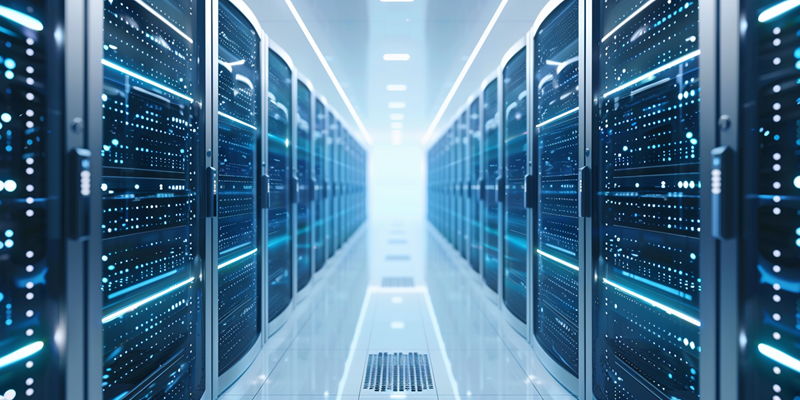Emerging technologies and artificial intelligence (AI) are rapidly accelerating, resulting in a profound impact on the energy utilization of data centers across the U.S. As the industry braces for a new report updating energy consumption estimates, stakeholders eagerly anticipate insights into how recent advances will reflect on the evolving energy dynamics of data centers.
The Paradox of Efficiency and Capacity Growth
Despite substantial leaps in data center efficiency over the past two decades, the insatiable growth in digital storage and computing power foreshadows a potential spike in energy consumption. The last two decades have seen data centers become more energy-conscious, implementing advanced cooling systems and leveraging better server architectures. However, as cloud services, big data, and IoT applications burgeon, they demand not just any kind of computing power, but power that’s continuously available and highly scalable. This has led to a significant escalation in the number of servers and the intensity with which they are used, suggesting an inevitable surge in the overall energy footprint of data centers.
Detailed exploration of trends from 2010 to 2018 highlights how improved energy management systems have somewhat offset the dramatic increase in data center capacities. Evolving technologies in storage, networking, and server efficiency have led to a deceleration in the rate at which data centers consume electricity. Optimizations such as server virtualization and more efficient power supply units played a role in curbing energy use. Nonetheless, the voracious appetite for AI and machine learning workloads presents a new set of challenges, potentially reversing the advances made in the past.
AI’s Imminent Impact on Data Center Load
The advent of AI technologies is set to dramatically shift the scale, with CPUs and GPUs expected to drive unprecedented levels of energy demand. Unprecedented computational power is the cornerstone of AI and machine learning, enabling them to process large datasets and perform complex calculations at rapid speeds. Current-generation GPUs are particularly power-hungry, and as AI models become more sophisticated, their energy requirements continue to rise. This shift paints a future that could stress the current paradigm of power consumption in data centers.
Insights into the specific challenges and metrics associated with AI workloads, including server utilization rates and cooling requirements, are crucial for understanding the imminent energy surge. The utilization rates of servers running AI applications tend, on average, to be higher than those for general computing tasks. Additionally, AI workloads lead to intense bursts of power use, requiring a rethinking of how data centers manage peak loads. Cooling systems, too, are re-engineered to deal with the greater heat output from extensive GPU use, often resulting in higher energy consumption than traditional cooling methods.
Comprehensive Study on AI-Driven Energy Consumption
Arman Shehabi and Sarah Smith from the Lawrence Berkeley National Laboratory provide a sneak peek into their research processes, encompassing emerging trends like specialized hardware and edge computing. Their study delves deep into the varying needs of AI-driven workloads by examining a broad array of data points across different types and sizes of data centers, aiming to quantify the energy impact of AI with greater precision than ever before.
Their 2024 energy use report reflects a focus on the principles governing data collection and analysis in the context of AI. The researchers grapple with forecasting energy consumption in an era of rapid tech evolution. Variables such as the emergence of specialized AI chips and the edge computing paradigm add layers of complexity, complicating the assessment of AI’s overall energy footprint. By analyzing and projecting the intersection of technology trends and energy use, the upcoming report aims to serve as a critical tool for scaling data center infrastructure responsibly.
The Complexities of Data Center Energy Metrics
Delving into the new variables in the energy equation like liquid cooling systems, theoretical versus real-world PUE, and WUE scores. The transition to denser AI workloads has necessitated an evolution in cooling strategies, with liquid cooling poised as a more efficient alternative to air-cooled systems for high-performance computing tasks. However, measuring actual energy savings from such technologies requires a nuanced understanding of power usage effectiveness (PUE) and water usage effectiveness (WUE), which cannot always be adequately captured through traditional metrics.
Examining how the lack of concrete data on diverse data center types poses a challenge for accurate estimations of future energy use. Data center configurations range from hyper-scale facilities to modular edge sites, each with unique operating conditions and energy profiles. As a result, establishing a one-size-fits-all model for predicting energy consumption proves to be an arduous task. The LBNL team underscores the need for comprehensive data collection, including finer details like the power draw of specific components and the operational patterns of various types of data centers.
Localized Burden of High Energy Demands
Analyzing how the geographical distribution of power resources is set to play a crucial role in supporting localized energy needs induced by AI-rich data centers. Certain regions could find their power grids under strain as clusters of data centers amass, particularly those servicing the burgeoning demand for AI services. It’s imperative to assess whether local energy infrastructure can endure the surge to ensure reliability and avoid potential brownouts or service interruptions.
Discussion on the importance of shaping regional energy policies and infrastructure to keep pace with data center energy demands. Policymakers and utility providers must engage in forward-looking planning, considering the geographic aspects of data center growth and the ramifications of AI-induced power consumption. Strategies may include investing in renewable energy sources, improving grid resiliency, and incentivizing the adoption of energy-saving technologies in data centers.

